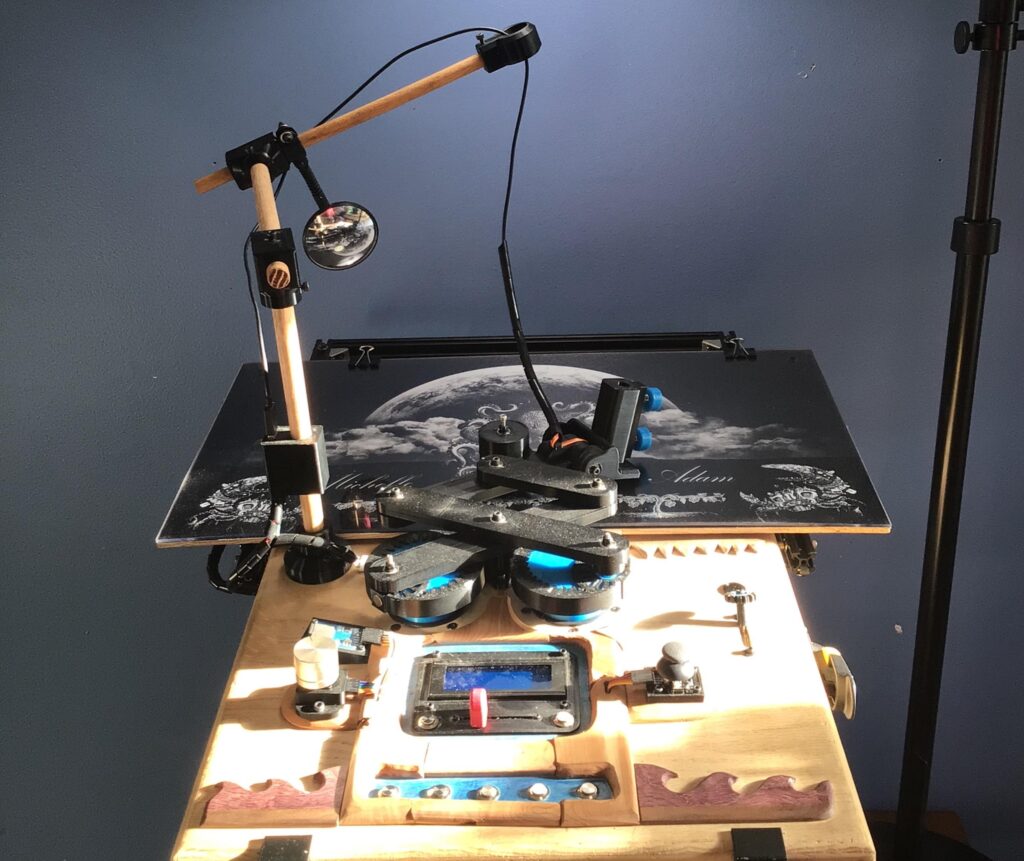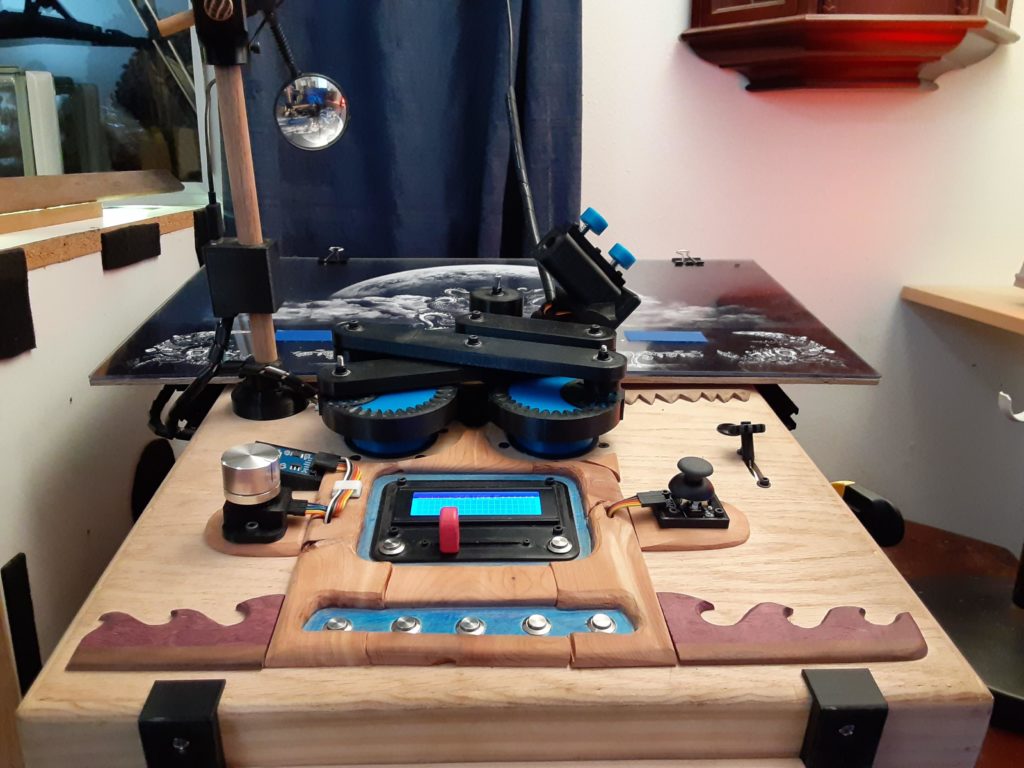A CNC pen plotter with very unusual kinematics

The vast majority of automated, CNC-controlled machine tools utilize a kinematic motion system that is (not coincidentally) the easiest for people to wrap their heads around. This is your standard Cartesian layout, in which the tool head rides on linear rails along two or three axes. But there are many other kinematic systems, especially once you start utilizing advanced trigonometry. One example of that comes from Mike Barkelew’s Scribble Buddy CNC Pen Plotter.
Almost every other pen plotter you’ll see will have standard Cartesian kinematics: two stepper motors, two belts, and two linear rails/rods. Scribble Buddy is a lot different. It has a kinematic system that resembles the parallelogram linkage that you’ll see on something like a pantograph, but with the two linkage ends attached to motorized wheels. By rotating those wheels to specific angles, the machine can change the geometry of the linkage and move the pen to any location within the work area. The downside is that it can’t draw perfectly straight lines. The benefit is that it is interesting and cool.

Scribble Buddy’s structure is a combination of wood and 3D-printed mechanical parts. On the electronics side, it uses an Arduino Mega 2560 board to control the two wheel stepper motors and the servo motor that lifts the pen. Hall Effect sensors give Scribble Buddy closed-loop feedback for precise positioning. The control interface consists of an LCD screen, a sliding potentiometer, a rotary encoder, and a joystick. Scribble Buddy accepts standard G-code and uses formulas to convert the commands into wheel rotation that works for this kinematic system.
From a practical perspective, Scribble Buddy has very little utility. But it is always great to see makers experimenting with different kinematics.